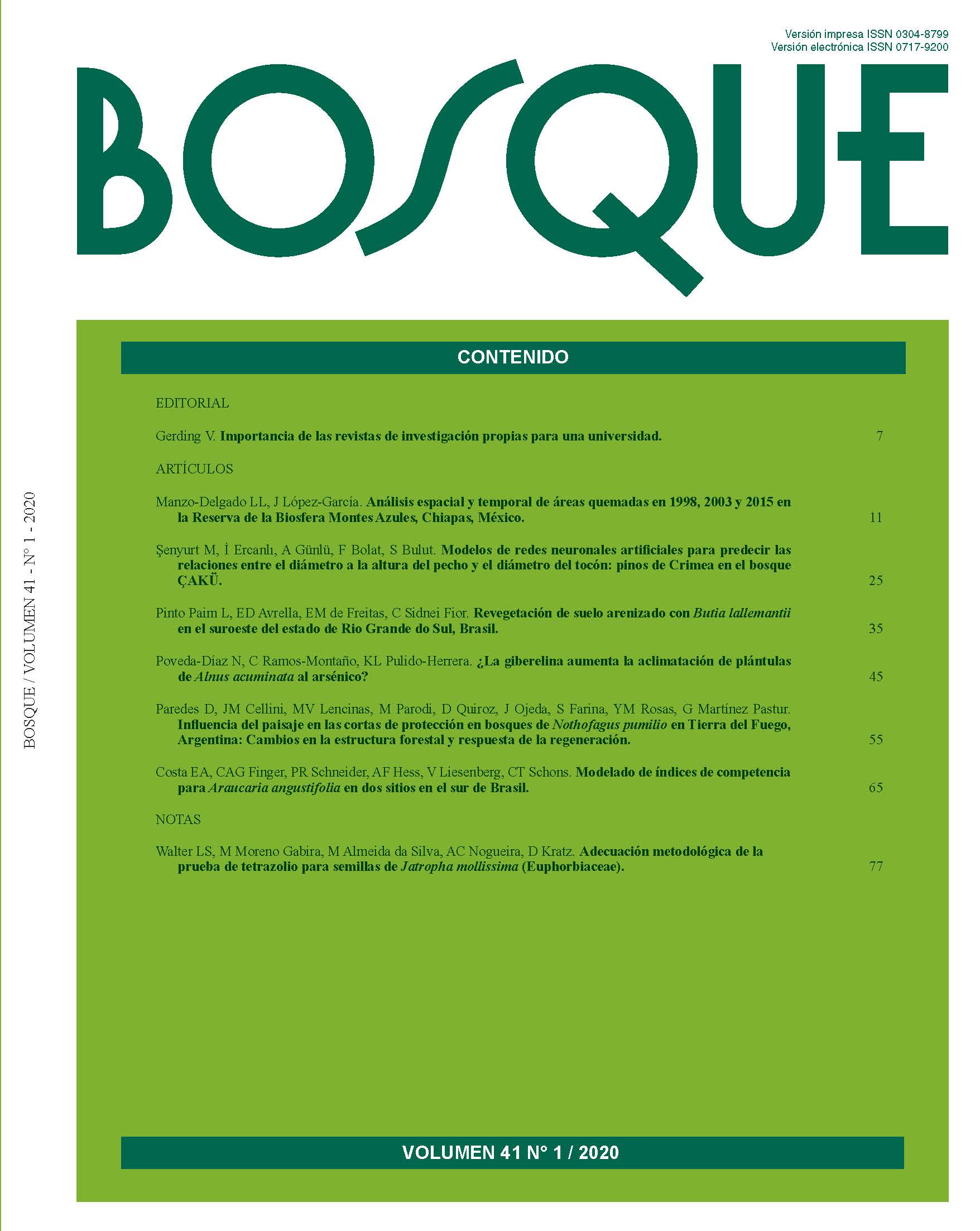Landscape influence in the shelterwood cuts of Nothofagus pumilio forests in Tierra del Fuego, Argentina: Changes in forest structure and regeneration performance
Main Article Content
Abstract
During the last thirty years, shelterwood cuts has been the most applied regeneration method in Nothofagus pumilio (lenga) forests. This treatment was implemented without any consideration of the landscape, and without considering yield gradients (e.g. stand site qualities), environmental restrictions (e.g. soil water availability) or potential natural disturbance factors (e.g. wind exposure). The objective was to evaluate the dynamics of the remnant forest structure and the natural regeneration 10 years after harvesting across the landscape considering different environmental gradients. Sampling plots were established in nine stands distributed across Tierra del Fuego, Argentina (north, east and south areas) where forestry activity has been concentrated during the last years. The selected areas presented differences in the rainfall regime (402 to 446 mm yr-1) and site qualities of the stands (2.6 to 3.3). Forest structure was similar among the studied areas, nevertheless harvesting intensity was variable (30 % to 57 %) generating different remnant basal areas (BA) (22 to 47 m² ha-1) and woody debris accumulation in the forest floor (167 to 230 m³ ha-1) after harvesting, or in combination with local wind-throws. The current forest structure presented differences in BA (6 to 34 m² ha-1) and established regeneration (49 to 110 thousand ha-1) that varied in height (0.6 to 1.0 m) and growth (4.1 to 12.8 cm yr-1) according to the area and the received damage due to abiotic and biotic factors. We can conclude that forests located along the considered landscapes and environmental gradients differentially responded to the proposed silvicultural treatments, where climate influenced over the post-harvest canopy stability and the established regeneration. For this, it is mandatory to define different silvicultural strategies throughout the landscape.

